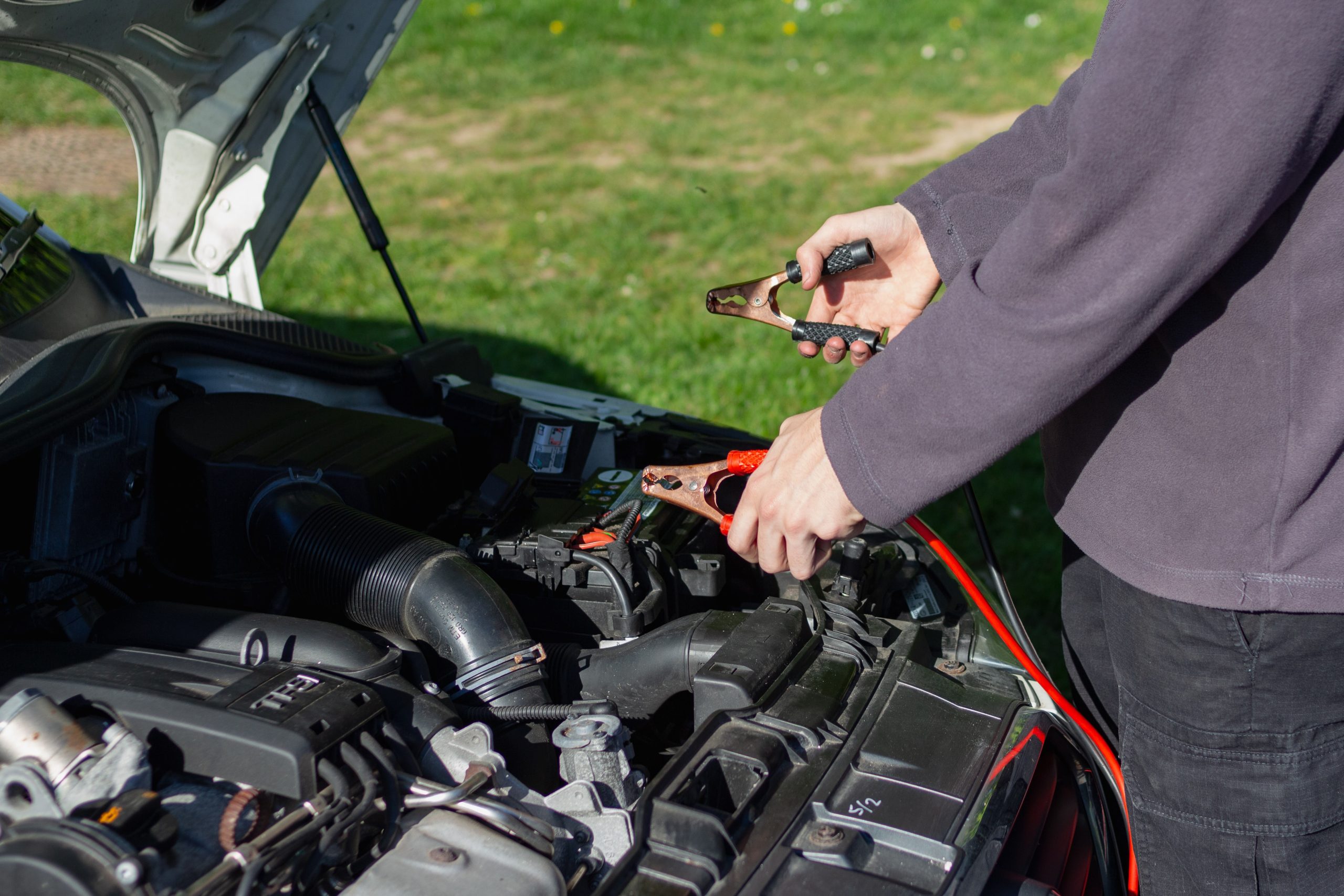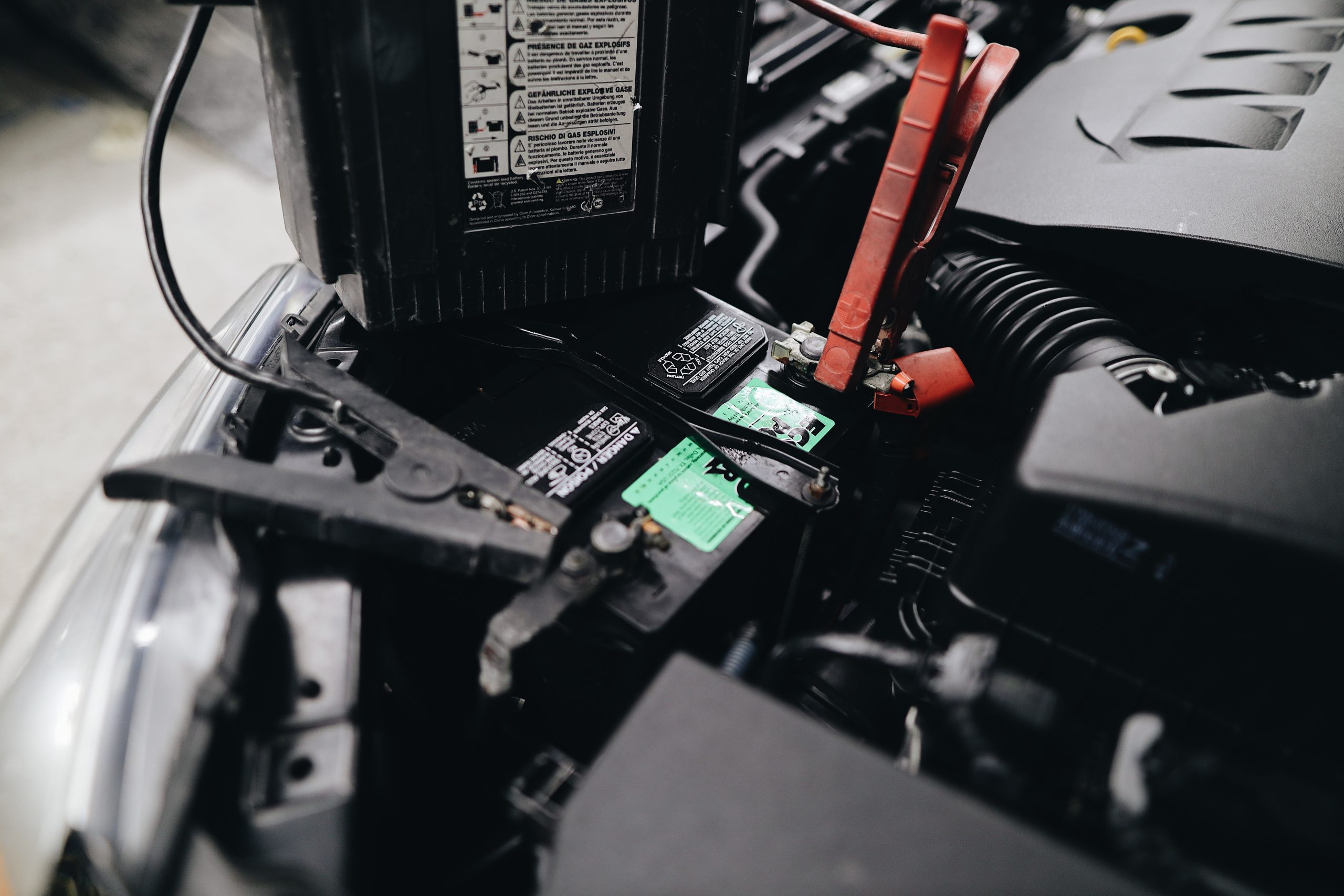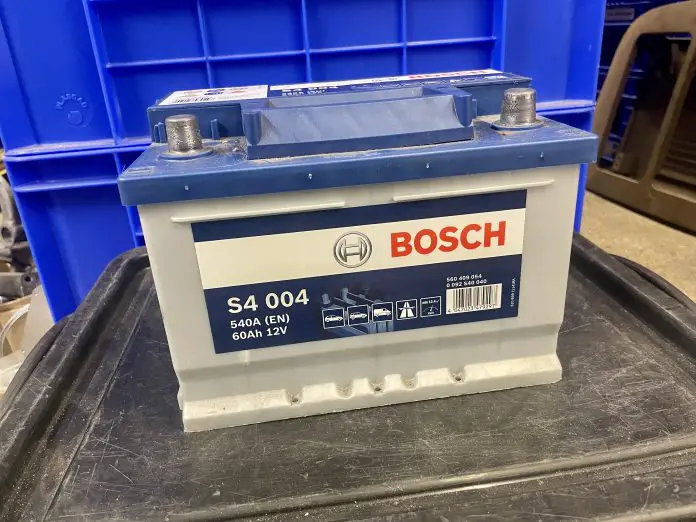How long does a car battery last? In this ultimate guide, we have everything you need to know about car batteries. From the most common battery problems to extending the lifespan of your battery.
We look into the most effective way to recharge your dead battery and start your vehicle if your battery is flat. We address the longevity of lead-acid batteries and how your old unit is recycled. Plus, frequently asked questions such as how long will a car battery last without driving? What are the most common car battery problems? And, when is the best time to replace your battery.
What is the average lifespan of a car battery?
A car battery will last anywhere between 3 and 5 years before a replacement is required. This of course depends on the size and type of the unit plus the make/model of your car. Colder climates, usage and battery problems can greatly impact how long a car battery lasts. Vehicle electrical problems and additional drains such as leisure use can put extra strain on your unit too.

The most common car battery problems
Drain
This is where a fault on your vehicle causes an excess drain on your battery. A faulty sensor, alternator, loose cables and corroded battery terminals are just a few reasons your battery could be draining. If you suspect this to be the case a trip to a garage or auto electrician is needed to prevent a total battery drain.
Leak
Car batteries are designed not to leak because of the corrosive liquid they contain. However, in some instances, they can leak most commonly through the cell caps on the top. Common causes include overcharging and physical damage.
Cold Weather
The nemesis of batteries. Cold weather causes the electrolyte solution to be less effective making the battery inefficient. The additional strain of using cold-weather extras such as wipers and heating pits additional strain on your battery.
Faults
Common faults can include broken internal connections and plates caused by corrosion and vibration. Short-circuited cells are caused by a failure of the separator and/or a build-up of shed plate material. Faults with the distributor (model dependent) caused by age or corrosion.
Smell
If you are unlucky enough to have a leak, the acids can cause sulphur to build up giving off a stench of rotten eggs.
Short distance driving
If you make frequent short trips in your car, it may not be enough to charge the battery sufficiently. Going for the odd long run is great for recharging your battery and is essential for clearing your vehicle’s DPF if you drive diesel.
How can I extend the life of my car battery?
Storing your car in a garage out of the cold when not in use is a great way of extending battery life. Likewise disconnecting the battery completely if the vehicle will be laid up for a while is good practice. Driving the vehicle regularly on long journeys will keep your unit topped up with charge and in great shape.
Common symptoms of a dying car battery
Being slow to start, battery light, not starting at all, other warning lights such as the seatbelt or airbag lights have been known to flag up. That dreaded clicking noise when you turn the key. Waring lights may start appearing randomly on some models.

When does my car battery need replacing?
A battery change may be part of your vehicle’s service schedule and your mechanic may recommend a change during a routine visit. Likewise, if you experience any of the symptoms listed above it may be worth looking at a replacement. There will always be numerous high-quality brands that manufacture batteries for your car, it pays to shop around online for a deal.
How long will a car battery last without driving?
A car battery will last around 2 weeks if it isn’t being driven. A battery will get fully discharged if left for 2 – 3 months, after this period it may not be possible to restart your car, even with a jump or attempt to recharge. Starting the vehicle regularly or going for a short drive will recharge your battery. The rotation of your engine will drive an alternator that produces an electric current.
If you are away for a long time or storing your car over winter, it is good practice to completely disconnect the battery to reduce the possibility of a full discharge. Removing the battery completely and storing it somewhere warm and dry will help too. Some manufacturers say their batteries will last up to 8 months like this. Additionally, plug-in devices known as battery conditioners are available which will keep your battery alive for extended periods.

How long do EV batteries last?
How about electric vehicles? It is estimated most current generation EV batteries will last between 7 – 10 years or 100,000 to 150,000 miles. These estimations will be backed up by your manufacturer’s warranty. Range anxiety is one of the biggest factors plaguing EV car owners. After this period, the range of your vehicle may have decreased significantly and a replacement could be required.
How to jump-start your car from another car
Jump starting involves connecting the battery from one car to another to transfer the charge. Once sufficient charge has built up the vehicle should be able to start and use its alternator to recharge the drained battery.
- First of all, you will need a pair of jump leads. These can usually be purchased at most petrol stations if you do not carry a set with you.
- Manoeuvre the vehicle charged battery so that the leads will reach comfortably (do not let the two vehicles touch)
- Ensure both vehicles are switched off
- Locate the flat battery. Attach the red positive lead to the positive terminal and the other end to the positive terminal on the charged battery.
- Attach the black negative lead to the negative terminal on the charged battery.
- Attach the other end of the black negative lead to the earth connection in your engine bay, or a suitable exposed part of the engine itself. (you may see a small spark)
- Try and start the flat vehicle
- If it doesn’t fire up right away, leave everything connected for 10 minutes and try again.
- Turn off the ignition on the original charged vehicle.
- Remove black negative leads from the charged vehicle followed by the rest of the leads.
- Take the vehicle for a drive/leave idling to charge the battery.

How to recharge your car battery
To recharge your battery you will need a trickle charger and a mains electricity source. This is the most effective method to fully charge your battery & is easy to do from home. You charge a car battery whilst it is still in the car, or before fitting if preferred.
- Check both of the contacts are clear of debris and free from rust.
- Ensure the charger is switched off at the mains
- Connect the red lead to the positive terminal
- Connect the black lead to a dedicated negative terminal
- Turn on the charger at the mains
- Switch the charger on and allow time to charge. (preferably on a low setting overnight) Most devices will indicate when the battery is full.

Image Credit: Pexels
How To Use A Jump Pack
- A jump pack is a type of portable battery commonly used in the motor trade. It can be kept at home or brought to someone that needs their battery jump starting.
- First, read the manual, different units have varying settings.
- remove any metal jewellery and make sure the vehicle isn’t near flammable substances.
- Using the vehicle handbook, identify the positive and negative terminals on the car. (they are not always directly on the battery)
- Ensure the jump pack is completely off before connecting.
- Connect the red lead to the positive terminal
- Connect the black lead to a dedicated negative terminal away from the battery, or to an unpainted part of the vehicle’s chassis, frame or engine block.
- Switch the jump pack on (some have a specific jump setting)
- Turn the vehicle on. Do not attempt to start for more than 5 seconds
- If the car won’t start, wait 2-3 minutes and try again
- If the car won’t start after 4 attempts, a new battery is required
- Remove the black negative lead first followed by red positive.
- Let your engine idle for a few minutes before driving away. This will give the alternator a chance to top up charge in the battery.

How to bump start your car
- If no other options are available to you it is possible to bump start a car with a flat battery using wheel rotation to turn the engine over. The car must have a manual gearbox for this method to work.
- Turn off the ignition and reduce any additional electrical battery drainage. (Air conditioning, head lights, interior lights, radio etc.)
- Prepare your run. The most ideal situation would be to roll the vehicle down an incline, however you cant always be that lucky. If the vehicle is on a flat surface you will need a couple of people to push the vehicle while you steer the vehicle and perform the start from the drivers seat.
- Switch your ignition to position 2. This will activate necessary components such as unlocking your steering.
- Put the car in to neutral and remove the handbrake. Ask your friends to PUSH from the rear of the vehicle. You will need to get the car up to a jogging speed to be most successful.
- Dip the clutch, select first gear & bring the clutch up to engage the engine.
- This should start the car and begin to charge the battery. Remember if the vehicle doesn’t start, your brakes and steering will be stiff. Be prepared to steer or press the brakes hard if needed.
- Let the vehicle idle or take it for a drive to recharge the battery. (30+ minutes should be optimum)

What happens to my old car battery?
Standard car batteries
The great news is up to 90% of your old car battery can be recycled. Batteries from internal combustion cars contain strong acids that are dangerous to the environment. They should always be disposed of properly at a local recycling centre or reputable garage. Once collected they will be sent to a facility for decommissioning. The acid will be drained safely and can be turned into a useful material called gypsum. Valuable metals such as lead and copper are extracted for reuse. As for the thick plastic housing, this will be crushed by specialist machinery and turned into pellets where it can be reformed and used again.
Electric car batteries
Unlike traditional car batteries, EV counterparts pose a difficult problem. It is estimated that fewer than 5% of EV batteries are recycled at the moment. Manufacturers like Nissan are taking the initiative to use end of life Leaf batteries in their factories for assembly robots.
Volkswagen is leading the way with a dedicated recycling plant. Metals from the cathode like nickel, lithium and cobalt are extracted and sent away for reuse. These extraction methods have proved time-consuming and expensive so it is important to find a more autonomous solution for the future.

Do car batteries come with a warranty?
Yes. All new batteries from a reputable company will come with a manufacturer’s warranty. A typical warranty will last 2 years or 24,000 miles though this can vary widely. If your car is new, it should be covered under the manufacturer’s warranty, mileage and age restrictions will apply. To claim your replacement battery you will need to contact the manufacturer of the unit or dealership where you purchased your new vehicle.
Conclusion
Whether your battery needs replacing or recharging it is always worth knowing how to best take care of this important component. Car batteries come in all shapes and sizes with different kinds of issues. Having the skills to identify problems early can avoid getting stuck out on the road.
We hope this ultimate guide on how long batteries last was helpful and informative. If you have suffered your own battery problems feel free to leave a comment below.



